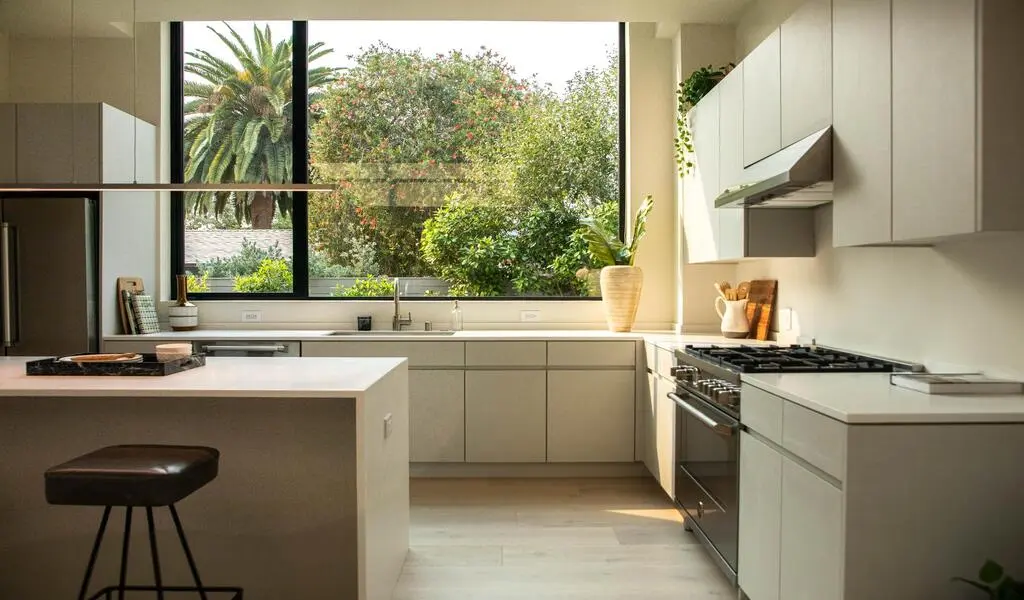Learning
Kitchen Islands: Maximizing Space and Functionality

The kitchen island is a versatile and essential component in many modern kitchens. Part workspace, part storage, and part gathering spot, this multifunctional feature plays a significant role in daily life. Designing a kitchen island that maximizes both space and functionality requires creativity, ingenuity, and problem-solving skills. This article explores design ideas and tips for creating the ideal island in your home.
Multipurpose Functionality
Kitchen islands can serve many functions, so consider incorporating features to meet various needs. Some examples include a workspace, seating area, and storage all in one, a sink or cooktop, power outlets for appliances, and open shelves for cookbooks and decorations.
Assessing Your Needs and Space
The first step in crafting a perfect kitchen island is determining what purposes it will serve. Some popular uses include food preparation, cooking or baking, additional seating, and storage. Begin by evaluating the size and layout of your kitchen, as well as considering how often you cook and entertain guests. This information will inform your design choices.
Pick Optimal Seating Options
If your island will function as a dining area, consider the types of seating that will work best. Some ideas include bar-height stools for casual dining, low-back chairs for a more elegant look, stools on wheels for flexibility, and custom-built seating that integrates into the island.
Ventilation and Range Hoods
Proper ventilation in your kitchen is essential, especially when your kitchen island includes a cooktop or other heat-producing appliances. Installing range hoods above your island can help remove excess heat, steam, and odors, ensuring a more comfortable cooking experience. There are various types of range hoods available, so pick one that complements your kitchen’s design and offers optimal functionality.
Play with Shapes and Levels
Kitchen islands come in many shapes, from traditional square or rectangular designs to curved, L-shaped, or T-shaped configurations. Experiment with different shapes that not only maximize space but also add interest to your kitchen. Additionally, consider incorporating different levels for different functions, like a lower surface for seating or a raised countertop for food preparation.
Material Selection
Considering the materials used for your kitchen island is essential for achieving your desired aesthetic. From countertops to cabinets, pick materials that will not only be durable and easy to maintain but also complement the rest of your kitchen. Examples of countertop materials include natural materials such as granite, marble, or wood, or engineered materials like quartz or laminate.
Consider the Layout and Traffic Flow
When designing a kitchen island, it is essential to ensure that it does not disrupt the overall flow of the kitchen. Plan for enough clearance around the island to open cabinets, doors, and appliances without difficulty. Also, consider how easily family members and guests can navigate the space, as the island should facilitate efficient movement throughout the kitchen.
Multiple Storage Solutions
One of the primary benefits of a kitchen island is additional storage. Incorporate a mix of storage solutions to maximize your space and keep your kitchen organized. These can include cabinets and shelves, open shelving for display or easy-access items, drawers for utensils and tools, and pull-out or pull-down shelves.
Make it Personal
A key aspect of the art of kitchen islands is personalizing your design to suit your family’s needs. Customization is key, so ensure that your island reflects your personality, taste, and style. Consider adding special touches like colorful backsplashes, unique hardware, or decorative accents to make your kitchen island feel like it is truly yours.
Lighting Solutions
Having proper lighting over your kitchen island is essential for completing tasks and creating ambiance. There is a multitude of lighting options available, so striking the right balance is crucial. Some popular choices include:
- Pendants: Decorative and versatile, they create a focal point above the island.
- Recessed lights: Subtle and functional, they provide even illumination.
- Track lights: Adjustable and versatile, they can direct light to specific areas.
Tips for Smaller Kitchens
Having a smaller kitchen does not mean that you cannot benefit from a kitchen island. With careful planning and creative solutions, you can have an island that suits your needs and optimizes your space. Consider a compact, movable island on wheels, or a narrow table-like island that can double as a workspace and seating area.
Conclusion
Designing the perfect kitchen island is as much art as it is science. Taking the time to evaluate your needs, preferences, and space can produce a well-functioning and visually appealing island that suits your lifestyle. Remember to be creative and think outside the box to create an island that is both practical and stylish.
SEE ALSO: Exploring Code Culture and Web Development in Thailand





























